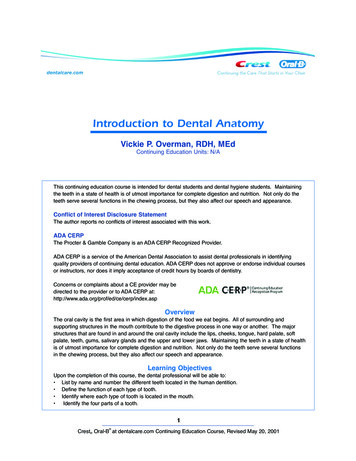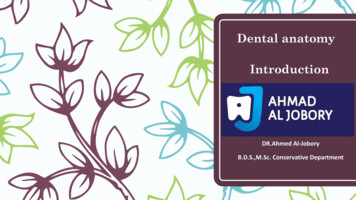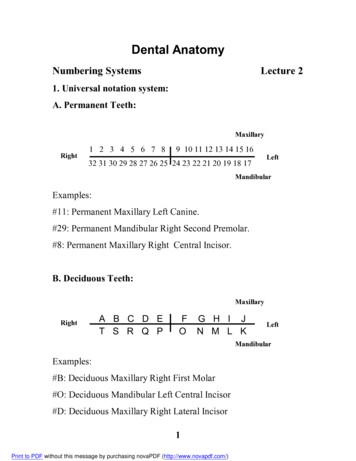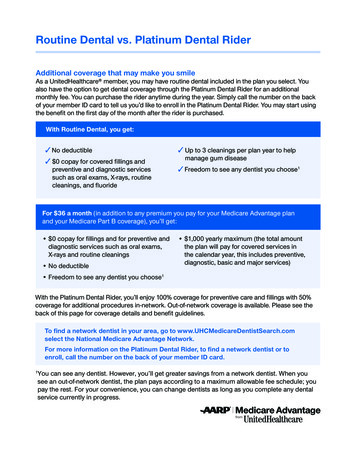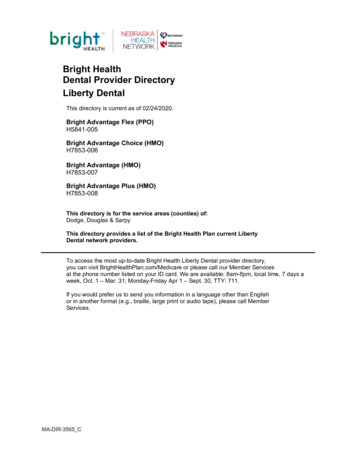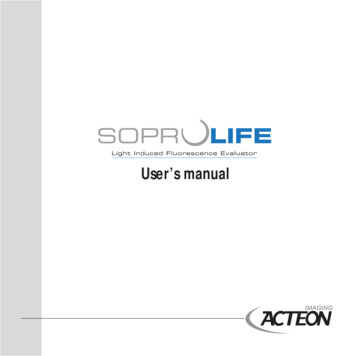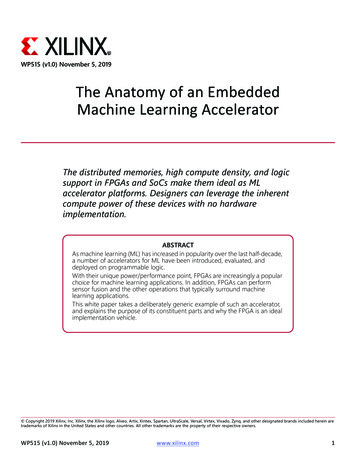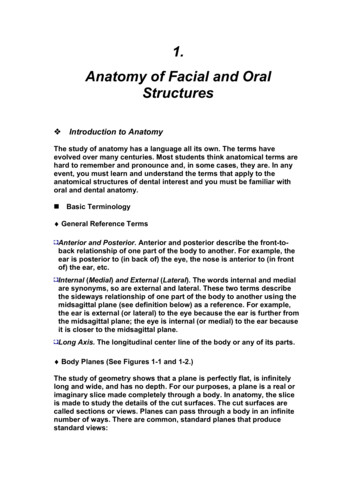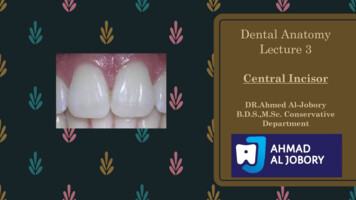
Transcription
Dental AnatomyLecture 3Central IncisorDR.Ahmed Al-JoboryB.D.S.,M.Sc. ConservativeDepartment
The permanent maxillary Incisors– Maxillary incisor are four in number. The maxillarycentral incisor is larger than the lateral incisor &they aresimilar anatomically, these teeth supplement each otherin function, their major function is to punch & cut foodmaterial during the process of mastication.
Principal identifyingfeatures of maxillarycentral incisor
1) It is the widest anterior tooth mesio-distally.2) It is has a square or rectangular appearance.3) Straight mesial outline and rounded distal outline.4) Sharp mesio incisal angle and rounded distal incisalangle.5) Mamelons on the incisal ridges (in newly eruptedteeth)-( Presence of mamelons ).6) Well marked marginal ridges, lingual fossa & welldeveloped cingulum.7) Single tapered root.8) Cingulum.
Characteristic featuresof Incisor crown
Incisal ridge: is that portion of the crown, which makes up thecomplete incisal portion.Incisal edge used when the occlusal wear creates flattenedsurface linguo-incisally and angle formed by linguo-incisalsurface & labial surface.
THE LABIAL ASPECT
1. The mesial outline is slightly convex with a crest ofcurvature (representing the contact area) near themesio-incisal angle.2. The distal outline is more convex than mesial outlinewith crest of curvature being higher toward the cervicalline of the junction between incisal and middle thirds.3. The incisal outline is newly erupted teeth has elevationscalled mamelons, with age the mamelons willobliterated and straight incisal outline is seen.4. The incisal outline tend to curve downward toward thecenter of the crown making the crown length greater atthe center.
5. The cervical, outline of the crown follows a semicirculardirection with the curvature directed towards the root.6. The root is cone shaped with a blunt apex, It is 2-3mmlonger than the crown.7. A line drawn through the center of the root & crown tendsto parallel the mesial outline of the crown & root.
THE LINGUAL ASPECT
– The lingual outline of the maxillary central incisor isthe reverse of that found on the labial aspect .Thelingual aspect of the crown has convexities &concavity.– Below the cervical line, there is a smooth convexitycalled cingulum which confluent with raised marginalridge mesially and distally.– The crown & root taper lingually therefore mesiodistal dimension of the lingual surface is narrowerthan that of the labial surface– Below the cingulum, a shallow concavity is presentcalled the lingual fossa.
– The lingual fossa is bordered mesially by the mesialmarginal ridge, distally by the distal marginal ridge,cervically by the cingulum, incisally by the lingualportion of the incisal ridge, usually there aredevelopmental groove extending from the cinguluminto the lingual fossa.
THE INCISAL ASPECT
– The incisal edge is center over the root.– The labial outline is broad & flat.– The incisal edge & incisal ridge are well defined.– The outline of the lingual part tapers lingually to the cingulum.– The crown has triangular shape, as the root shape in cross section.– The mesio-distal dimension labially is greater than that lingually.
THE MESIAL ASPECT
– The crown is wedge shaped or triangular with thebase of the triangle at the cervix and the apex atthe incisal ridge .– A line which bisects the crown will bisect theroot.– The crest of curvature labially and lingually areimmediately coronal to the cervical line, Thesecrests of contour give the crown its greatest labiolingual measurement.
– The labial outline of the crown from crest ofcurvature to the incisal ridge is very slightlyconvex.– The lingual outline of the crown is convex at thecingulum then becomes concave at the mesialmarginal ridge then slightly convex at the incisalridge.– The cervical outline curves incisally more thanany surface on any tooth, about 3-4mm.
THE DISTAL ASPECT
– There is little difference between mesial &distal outline .– The curvature of the cervical line is less onextent distally than mesially.
Dental Anatomy Lecture 3 Central Incisor DR.Ahmed Al-Jobory B.D.S.,M.Sc. Conservative Department. The permanent maxillary Incisors –Maxillary incisor are four in number. The maxillary central incisor is larger than the lateral incisor &they are similar anatomically, these teeth supplement each other in function, their major function is to punch & cut food material during the process of .
